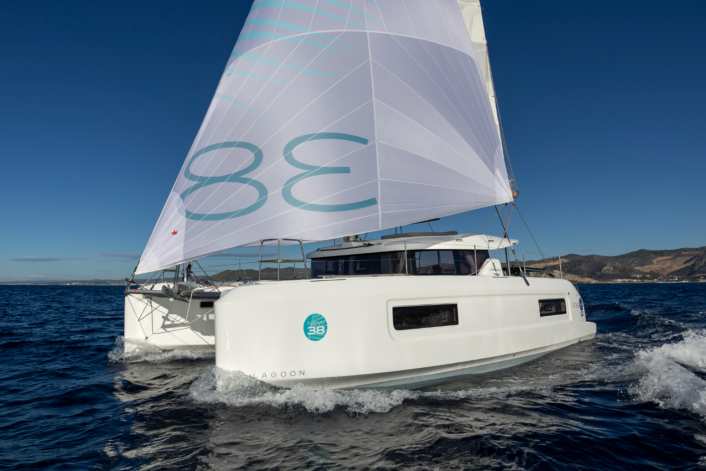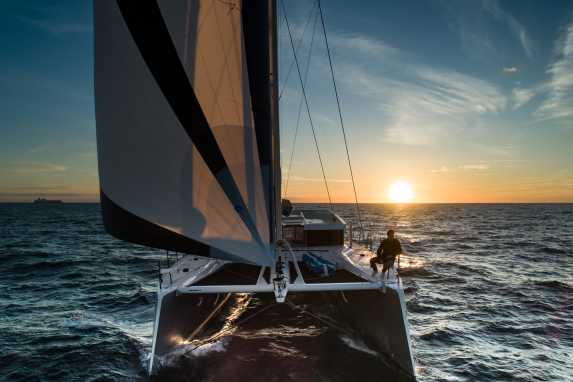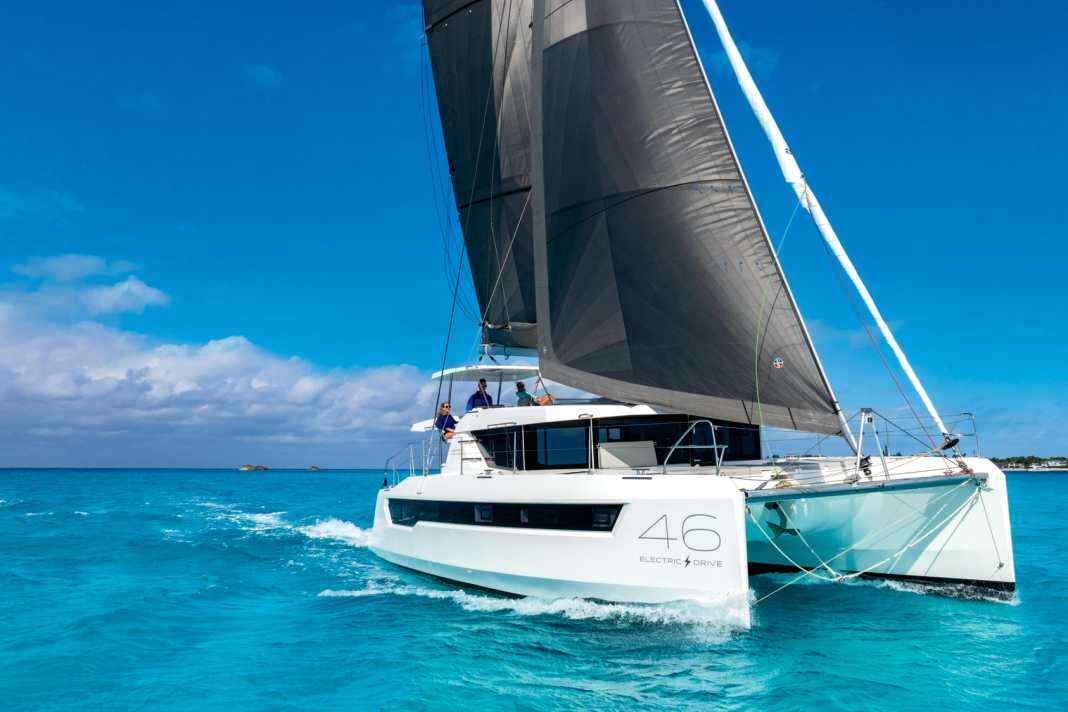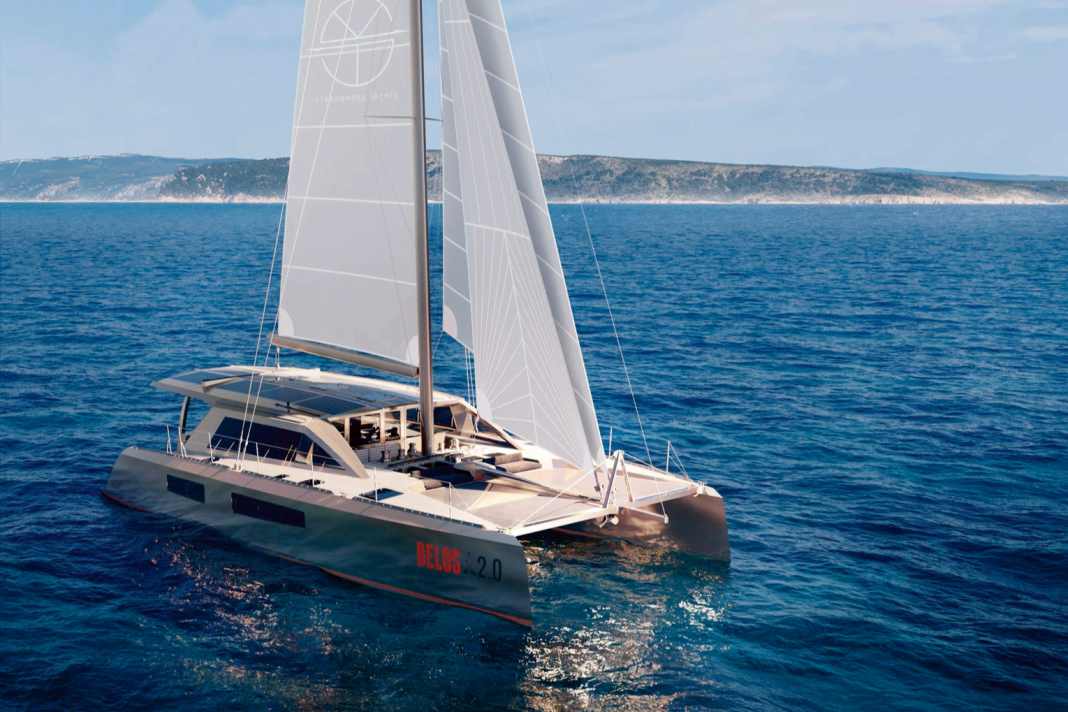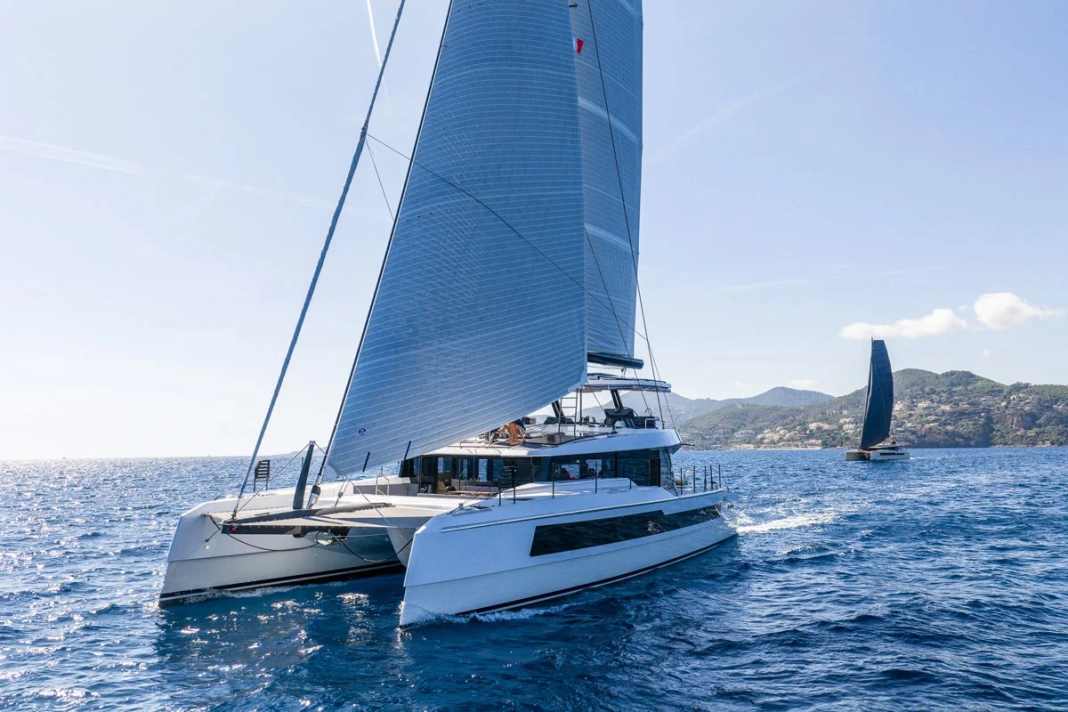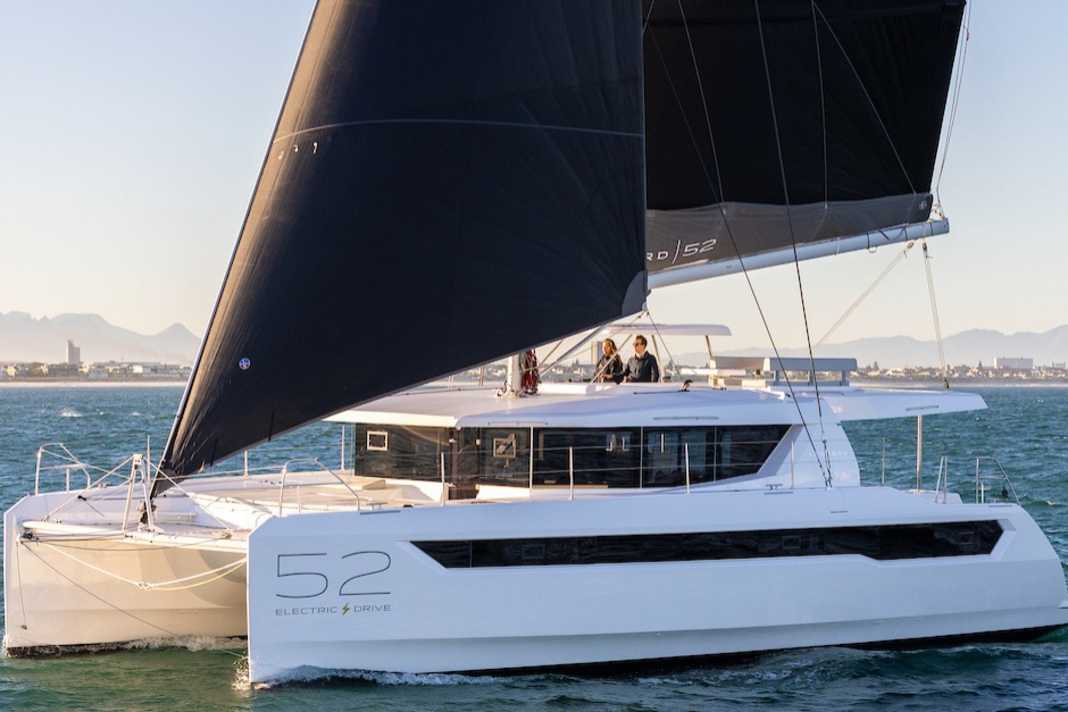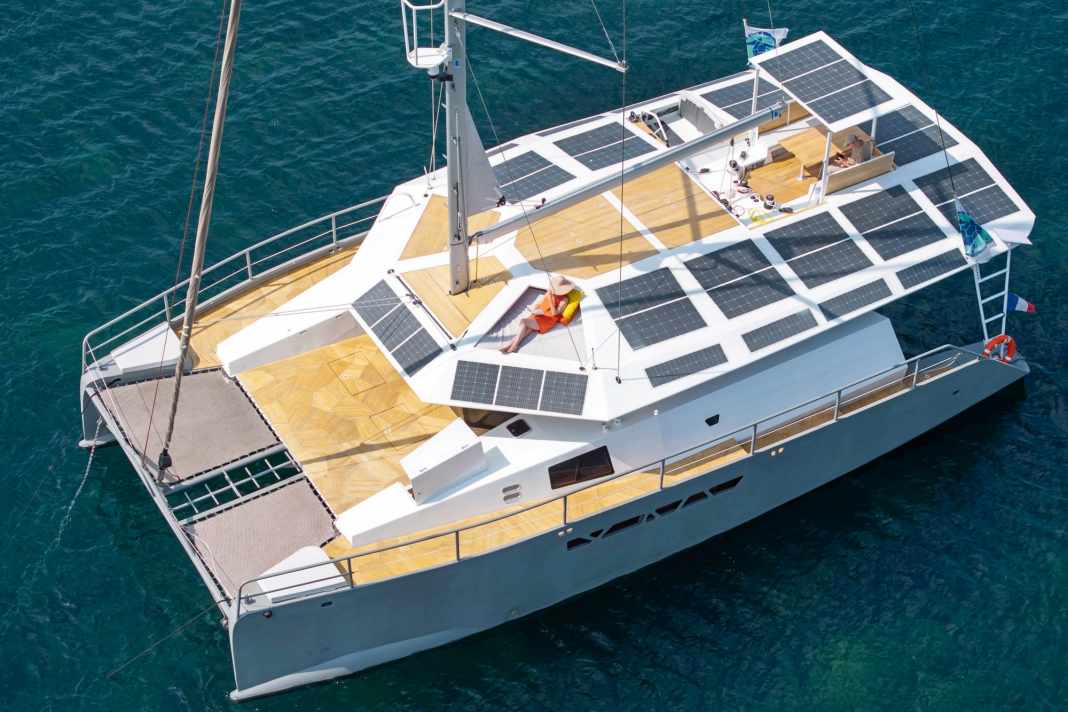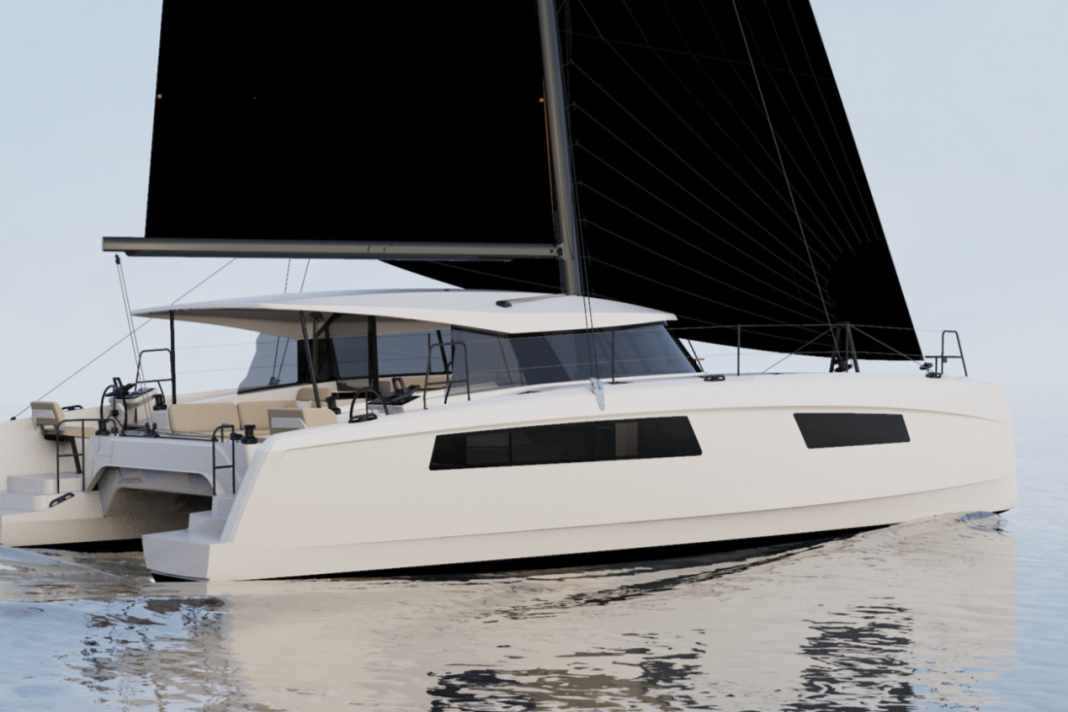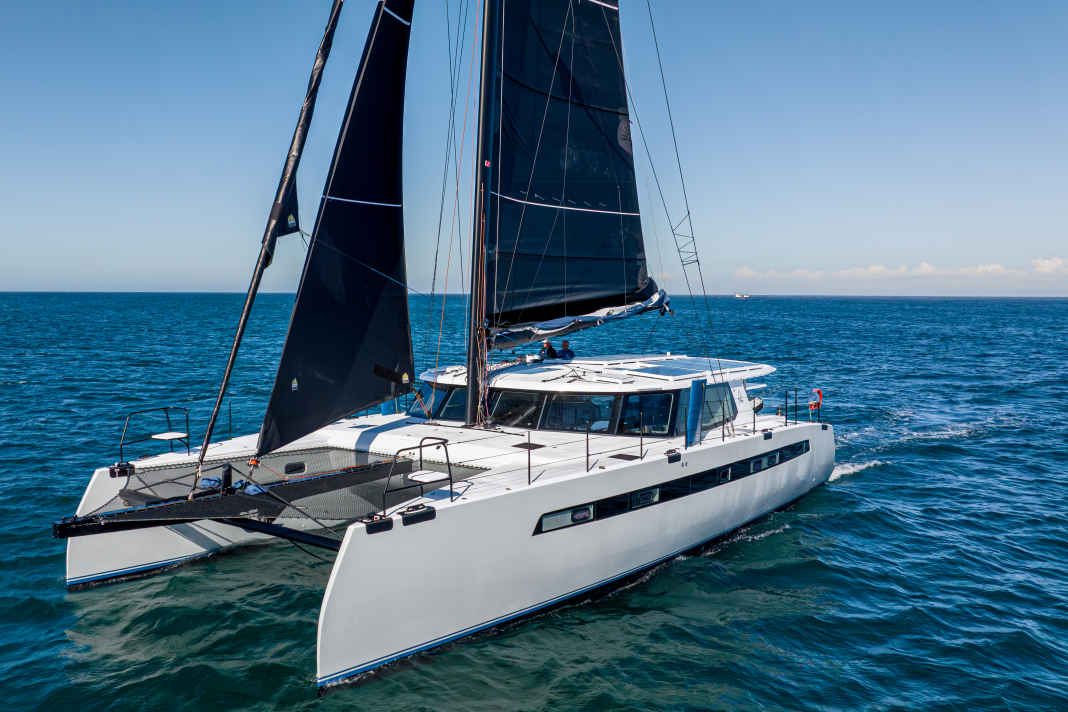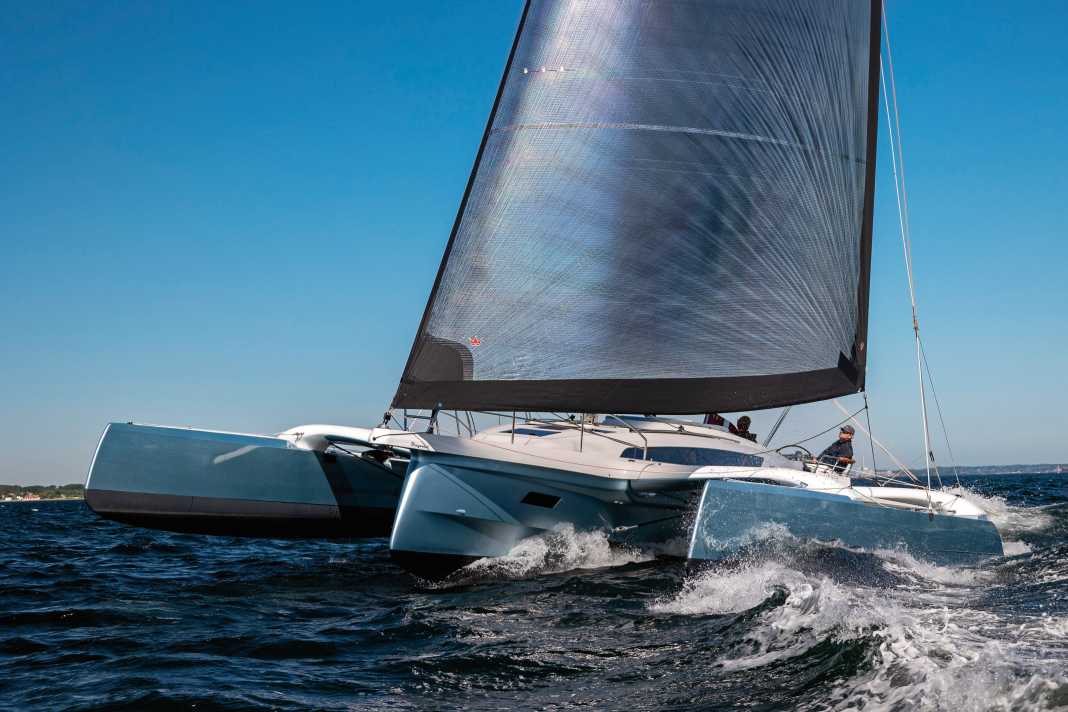Catamarans - high speed and lots of comfort
A catamaran is a boat with two hulls that are parallel to each other and connected in different ways. The name comes from the Tamil language and means "bundle of logs". This design offers high stability on the water and often enables higher speeds than conventional monohull boats. Catamarans are built in different sizes and for different purposes, for example as small beach catamarans, large and comfortable cruising catamarans or fast sports catamarans. They are particularly popular because of their speed and stability, but also their comfort.
Catamarans - more than just two hulls
A catamaran is a special type of boat characterised by two hulls arranged parallel to each other. This distinctive feature gives the catamaran a number of advantages over conventional monohull boats. Firstly, the twin-hull construction offers increased stability. When sailing, catamarans have significantly less lean (heel) than monohull yachts and are also less prone to rolling in waves. Because of these significantly smoother sailing characteristics, the risk of becoming seasick is usually lower on catamarans than on monohulls.
Catamarans are often more efficient than conventional boats. Due to their lower water resistance, they require less energy to move through the water. For motorised catamarans, this can lead to lower fuel costs.
Different types of catamarans
Catamarans differ in size and intended use. A distinction is made between, among others
- Cruising catamarans
- Regatta catamarans
- Trimarans
The cruising catamaran - when the centre of life is on the water
Both cruising sailing catamarans and motorised catamarans are designed so that the crew can live on them. They usually have the berths and wet cells for the crew in the hulls. Depending on the size and type of boat, the cabins are very spacious. In many cases, they are larger and more comfortable than on the classic sailing boat. The wider platform connecting the two hulls provides more space for passengers or equipment.
The superstructure between the two hulls usually accommodates the steering position and the Navigation corner. There is also a light-flooded saloon and a galley, the pantry.
Another advantage of cruising catamarans is their shallower draught compared to monohulls. They have no centreboards or keels, if they have flat stub keels at all. They can therefore also sail in shallower water or enter shallow bays.
Regatta catamarans - sailing in a different way
Regatta catamarans are characterised above all by their high speeds. However, a distinction must be made between small beach catamarans or sports catamarans for sheltered waters and ocean-going catamarans.
Beach and sports catamarans
The former are also known as beach cats and are specially designed for use near the coast and on shallow water. They are characterised by their lightness, which makes them easy to transport and allows them to be launched and landed directly from the beach. Their construction is generally simple, without cabins or other heavy equipment, which also contributes to their low weight.
Because of their lightness, beach catamarans can reach very high speeds. They are often equipped with centreboards to prevent drifting, one in each hull. These can be raised. The rudder blades can also usually be folded up, allowing these catamarans to be sailed directly onto the beach.
Despite their lightness and speed, beach catamarans offer good stability and are less prone to tipping than small dinghies, for example. This is why some people find it easier to learn to sail on a catamaran than on a monohull. However, the important feeling for tilting a boat is less strongly conveyed on a catamaran than on a dinghy.
Some well-known models of beach catamarans are the Hobie Cat 16 and the Nacra 17. These boats are popular for recreational sailing and racing.
Ocean-going catamarans
They are characterised above all by their high speeds. They are almost completely devoid of comfort, which makes them extremely lightweight. These catamarans also have no keel, which makes them even lighter than monohulls. However, like all catamarans, they can also capsize. If this happens, ocean-going catamarans, unlike beach catamarans, cannot be righted again without outside help.
Trimarans - one more hull for more speed
Like the catamaran, the trimaran is a multihull. High speeds are its trademark. In contrast to the catamaran, the trimaran has three hulls. The three hulls are arranged parallel to each other. The centre hull is almost always larger and wider than the two outer hulls, also known as floats. In principle, a trimaran is something like a very narrow yacht that rests on the floats to prevent it from tipping over.
A distinction must also be made between cruising trimarans and high-performance trimarans. In cruising trimarans, the hull is extended and accommodates cabins and the cockpit. Overall, however, this centre hull offers significantly less comfort than a comparably sized monohull yacht due to its narrow width.
High-performance trimarans, on the other hand, dispense with comfort altogether. They achieve their high speeds thanks to the favourable ratio of sail area to hull resistance.
Catamaran details
Most catamarans are equipped with sails that are also common on monohulls, Mainsail and genoa. The mainsail is often fully battened and has a very large sail area.
Catamarans have a double rudder, i.e. one rudder at the stern of each hull. On beach catamarans, the two tiller rudders on the rudder heads are connected to each other via a tie rod. The long tiller boom is then attached to the centre of the track rod. On larger cruising catamarans, the rudders are connected to each other via cables that are led to the steering wheel. This allows both rudders to be operated simultaneously.
Beach catamarans are often equipped with a trapeze or even two trapezes. The trapeze is a wire on each side that is attached to the top of the mast. A crew member can then use a harness with a hook to attach themselves to the wire and stand with their feet on the outside of the hull. This brings the crew's weight further outwards and counteracts heeling.
Catamarans - stability is important
The stability of a catamaran is based on its width. Unlike monohulls, where the heeling force from the sails is countered by a keel as a counterweight, catamarans use a different principle.
Due to the large transverse distance between the respective empty hull and the sails, the empty hull generates a high righting moment with a very effective lever. In addition, the windward hull acts as a kind of counterweight. Put simply, the buoyancy of the empty hull acts upwards and the weight of the windward hull downwards. Both forces provide the necessary counter-pressure to the pressure from the sails.
The greater the distance between the two hulls, the more effectively the principle works. Modern racing catamarans are therefore almost as wide as they are long. For cruising catamarans, however, space in the harbour and the design are limiting factors.
This is another reason why cruising catamarans like to anchor in bays.
Modern materials for modern boats
Different materials are used in the construction of catamarans depending on their intended use. Cruising catamarans from large-scale production are made from GRP, as are monohull yachts. There are cost reasons for this. GRP is the most favourable material for the desired properties.
The sportier the concept becomes, whether for a beach cat or a large sports catamaran, the higher the quality of the materials used, such as carbon fibre or aramid. The aim is to keep the weight as low as possible, as these catamarans focus on sailing performance, whereas cruising catamarans are more concerned with space and comfort.
The equipment of cruising catamarans
There are clear differences in the equipment of cruising catamarans compared to conventional ones Yachts. Due to the large amount of space available, there is more room for installations than on a monohull. For example, the tanks for fresh water and fuel are usually significantly larger than on comparable monohulls. With several hundred litres of fresh water, the crew can remain self-sufficient for longer, while the large fuel reserves allow a large radius of action under engine.
The interiors of cruising catamarans also differ from those of modern yachts. The cabins are located in the respective hulls and are therefore far apart from each other, allowing for greater privacy than on a monohull. The berths are located in the cabins. In addition, each cabin often has its own bathroom with toilet and shower. This turns each cabin into its own little flat.
The saloon and galley, usually located on the platform between the hulls, are more spacious than on monohulls. Depending on the size and price, the other Equipment options. Even air conditioning and heating systems are standard on cruising catamarans in many places.
The best sailing area for the catamaran
Here again, a distinction must be made between a sporty beach cat and a cruising catamaran. Sport catamarans can be sailed in almost any area, be it inland lakes or on the coast. They are not intended for the open sea, although very daring sailors have also sailed the oceans with such catamarans.
Cruising catamarans are mainly used in the Mediterranean and in tropical waters. There, they are characterised by their great self-sufficiency. Cruising catamarans are less suitable for the North Sea or Baltic Sea. However, this has nothing to do with their sailing characteristics, but with the conditions on land. There is usually a lack of suitable berths in the harbours.
The costs are higher than for a monohull
Two hulls, a special superstructure and the fact that catamarans offer more space mean that these special ships have higher acquisition costs, but also higher maintenance costs than a classic sailing yacht. The main factor in the purchase costs is that more material is used due to the larger enclosed space. In addition, more labour hours are required and the equipment is usually more expensive than on a monohull yacht.
Mooring costs are usually higher for a catamaran than for a monohull yacht, as it requires more space in the marina due to its large beam. However, the greater comfort and longer self-sufficiency of a catamaran also means that more time can be spent at anchor. In addition to the shallow draught, which opens up more anchoring options, mooring fees can also be moderate if marinas are frequently avoided.
The larger a catamaran is, the more varied the equipment options become. The price ranges therefore increase with increasing size.
Leading shipyards for the construction of cruising catamarans
There are many renowned shipyards that specialise in building catamarans. Here are five of the leading manufacturers:
- Lagoon: As part of the Beneteau Group, Lagoon is a French manufacturer known for its wide range of catamarans.
- Fountaine Pajot: also based in France and also with a wide range of products.
- Catana Group: Catamarans for different requirements are built under the brand names Bali Catamarans and Catana Catamarans
- Leopard Catamarans: Leopard Catamarans, manufactured by the South African shipyard Robertson and Caine.
- Sunreef Yachts: This Polish shipyard is known for its customised luxury catamarans.
Buying a new or used catamaran?
When purchasing a catamaran, it is important to consider whether a new purchase should be made or whether a replacement should be made. used catamaran is purchased. Size, condition and equipment are important criteria for this.
If you are buying second-hand, it is always worth having a specialist at your side to inspect and assess the technical equipment and overall condition. If you buy from a specialist dealer, you can be sure that they are bound by a warranty. The probability of making a bad purchase there is lower than with offers from private sellers.
Charter a catamaran- these requirements must be met
Similar to motor yachts, houseboats and sailing boats, it is possible to charter a catamaran. And worldwide.
A Boat licence is required for cruising catamarans if the catamaran is to be skippered. If this is not available, a skipper can be booked with many providers.
Small beach cats can also be hired almost anywhere on the coast and usually do not require a licence. However, many hire companies require a certificate of competence, such as a DSV catamaran licence. However, you can usually obtain a licence from such providers by completing a sailing course.
Many package holiday providers also offer beach catamarans as part of a club holiday. It is often possible to obtain a licence.
The costs of chartering a catamaran
Sailing is an expensive passion. This also applies to chartering. The cost of a cruising catamaran varies depending on its size, equipment and length. Even the season plays a decisive role. Between 1,500 and 8,000 euros per week are quite possible for a catamaran in the charter sector, but also considerably more. Added to this are the deposit, mooring fees, catering, fuel, cleaning and much more. Costs are particularly high in the high season.
However, as a cruising catamaran offers plenty of space and comfort, it can usually be sailed with more crew than a comparable monohull. This means that the charter costs are spread over more people.
